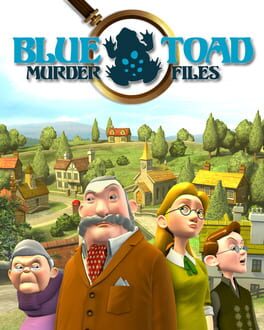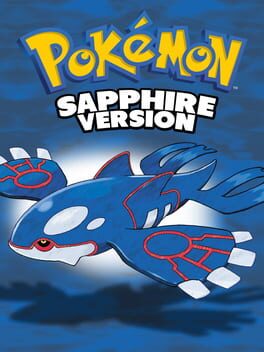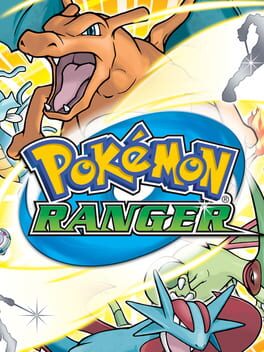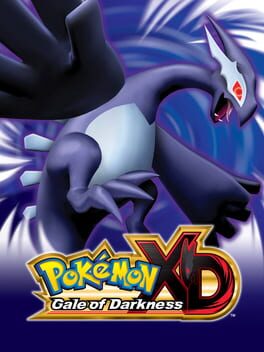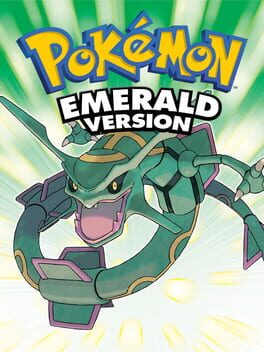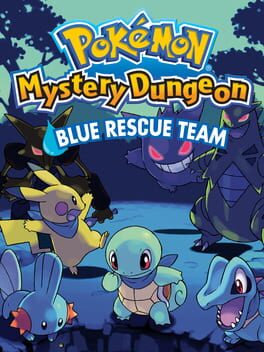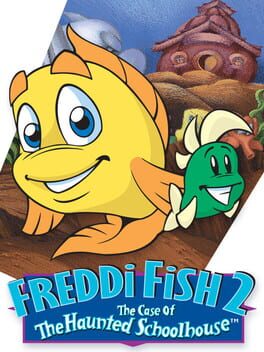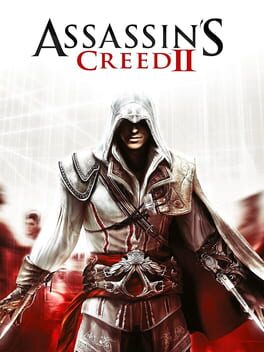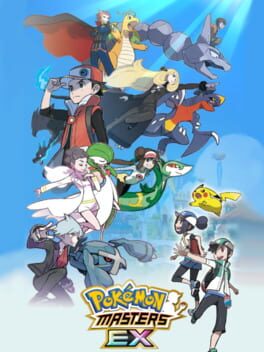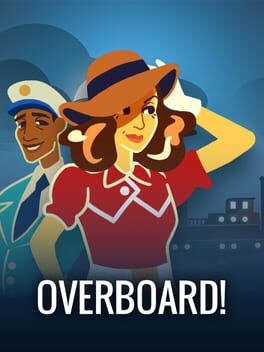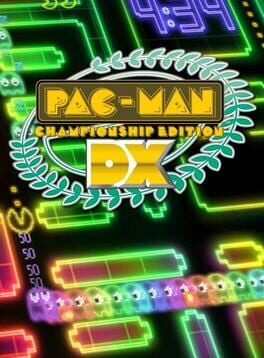Lucca202
BACKER
The PS3/360/Wii generation brought online stores to home consoles, but especially with the low storage in initial console models -- I have no clue how anyone got by with a 20Gb PS3 or an Arcade 360 -- it took a while until they caught on and became what they are today. For a while, there was so little stuff in there that you didn't have to be spectacular to hold the spotlight to yourself, and that made it a great time to capitalize on your small game.
Of course, there was a bit of confusion amongst developers on how to price games. $10 and $15 were kind of the norm, with price points like $25 and $30, which are common nowadays, being rare. Quality also wildly varied, with some cheap games priced high and the opposite situation as well. One particular game went all-in with its sales strategy: Blue Toad Murder Files.
It was one of the first, maybe the first episodic downloadable title released on the PS3. By all-in strategy, I mean it was outrageously expensive. I’m pretty sure each episode used to go for $15 when they released, with the first one costing even more. That’s at least 90 dollars for the whole series. Mind you, each episode is about an hour long, and the production value is incredibly low.
The game has you playing as a british detective from the Blue Toad Agency. After a triumphantly solved case, you decide to spend some time off in the countryside, at the village of Little Riddle. However, your vacation is soon interrupted by the murder of the town’s mayor. Without hesitating, you set out to investigate the crime, unearthing dark secrets of the tiny village on the way.
There are six episodes, and on each one, you investigate a new crime that occurs, solving puzzles on the way and using your powers of observation to, when the time comes, point your finger at the culprit. Sounds awesome, right? Puzzles? British village? The first game that comes to mind is Professor Layton, and that’s really fun. Unfortunately, that comparison does not actually hold in practice, for a myriad of reasons, beginning with the extremely low production values.
Despite being a PS3 game, the 3D models and animations in the game are of very low quality. There's glitchy facial animations, absent animations, animations that don't match what the narrator describes... Plus there's some garish 2D backgrounds that get used every once in a while instead of the game's usual 3D scenery. I can understand keeping a limited scope due to working on a tight budget, but it's a $90 game. This kind of art quality doesn't make sense.
And then there is the voice acting.
The story is led by a narrator, who does the majority of the talking, but characters are voice acted as well. By one guy. There is one man listed as a VA on the credits, and going through the game, it shouldn't be long before you realize that he's dubbing everyone. The worst part is that all the women’s voices are just that same guy speaking in falsetto. It is not only tasteless, but extremely grating. There are a lot of characters in this game, and this is sure to make you wanna punch the TV.
I respect the hustle, at least, he did put in some effort creating different speech patterns to try and make them different, but gosh, at least hire a woman for the female characters. Looking at all this, it's no wonder, after the game was complete, that the price fell so much over time. I paid $5 for everything on a sale, but even then, I question if it was that good an idea, as the gameplay isn’t very smart either.
There are twelve puzzles per episode. A handful of locations in town can be selected during each part of the plot, and when you visit one, you’re presented with a cutscene and a puzzle. After a while, you have to do a case review, which is a four question, multiple choice test about facts that were presented thus far. This happens three times per episode. Finally, at the end of the story, you have to pinpoint a culprit from a list of four people.
The puzzles are alright. A few of them are pretty good, others, okayish, and then there are the dumb word plays or listening challenges that just, ugh. The thing is, unlike the Layton series, in Blue Toad, the puzzles don’t ramp up in difficulty. Rather, they stay more or less on the same level, which I consider to range from easy to mechanically-intensive-but-otherwise-easy. To conceal this weakness, the designers added a timer to each puzzle so you have to solve it fast. It’s distracting and unbalanced: some puzzles have too much time, others, too little.
Then there’s the questionnaires, where you're asked details about the cutscenes. Some times it’s relevant stuff, like character names, locations, etcetera. Other times, it’s the color or look of a person or object, information that ultimately shows itself irrelevant. Which leads me to the part that really kills me: Finding the culprit.
If you’ve played Ace Attorney, then you’re used to huge trails of logic and deduction, going through all the evidence and testimony to link the killer to the time, place, means and reason for the murder. It takes a while, there are some leaps of faith along the way, but the full picture you get at the end is airtight. You know who, how, when and why.
In Blue Toad… Well, it’s far from that. The time you spend around town, solving puzzles… 99% of that time is wasted. In every episode, the killer is exposed by a single moment. One line. One item in the background. The way a dog barked when it saw them. Pure conjecture. One after the other, the cases’ conclusions outstupid themselves, making you ask "what is the point of this?".
The core of a detective story is the trail leading up to the culprit. The investigation, the clues, the hypotheses, all of these make the genre what it is. If we’re just going to stall for an hour and then wing it when the time comes, there might as well not be a crime, nor a detective. In fact, the end of the game never explains why the first murder happened in the first place, a cardinal sin in the world of murder mysteries.
The funny thing is, I played this game twice due to my atrocious memory, and the second time, I wrote a review to prevent myself from going through it all over again. And if you're still reading, I extend that recommendation to you. Just don’t. There are far better games that do what it does.
Of course, there was a bit of confusion amongst developers on how to price games. $10 and $15 were kind of the norm, with price points like $25 and $30, which are common nowadays, being rare. Quality also wildly varied, with some cheap games priced high and the opposite situation as well. One particular game went all-in with its sales strategy: Blue Toad Murder Files.
It was one of the first, maybe the first episodic downloadable title released on the PS3. By all-in strategy, I mean it was outrageously expensive. I’m pretty sure each episode used to go for $15 when they released, with the first one costing even more. That’s at least 90 dollars for the whole series. Mind you, each episode is about an hour long, and the production value is incredibly low.
The game has you playing as a british detective from the Blue Toad Agency. After a triumphantly solved case, you decide to spend some time off in the countryside, at the village of Little Riddle. However, your vacation is soon interrupted by the murder of the town’s mayor. Without hesitating, you set out to investigate the crime, unearthing dark secrets of the tiny village on the way.
There are six episodes, and on each one, you investigate a new crime that occurs, solving puzzles on the way and using your powers of observation to, when the time comes, point your finger at the culprit. Sounds awesome, right? Puzzles? British village? The first game that comes to mind is Professor Layton, and that’s really fun. Unfortunately, that comparison does not actually hold in practice, for a myriad of reasons, beginning with the extremely low production values.
Despite being a PS3 game, the 3D models and animations in the game are of very low quality. There's glitchy facial animations, absent animations, animations that don't match what the narrator describes... Plus there's some garish 2D backgrounds that get used every once in a while instead of the game's usual 3D scenery. I can understand keeping a limited scope due to working on a tight budget, but it's a $90 game. This kind of art quality doesn't make sense.
And then there is the voice acting.
The story is led by a narrator, who does the majority of the talking, but characters are voice acted as well. By one guy. There is one man listed as a VA on the credits, and going through the game, it shouldn't be long before you realize that he's dubbing everyone. The worst part is that all the women’s voices are just that same guy speaking in falsetto. It is not only tasteless, but extremely grating. There are a lot of characters in this game, and this is sure to make you wanna punch the TV.
I respect the hustle, at least, he did put in some effort creating different speech patterns to try and make them different, but gosh, at least hire a woman for the female characters. Looking at all this, it's no wonder, after the game was complete, that the price fell so much over time. I paid $5 for everything on a sale, but even then, I question if it was that good an idea, as the gameplay isn’t very smart either.
There are twelve puzzles per episode. A handful of locations in town can be selected during each part of the plot, and when you visit one, you’re presented with a cutscene and a puzzle. After a while, you have to do a case review, which is a four question, multiple choice test about facts that were presented thus far. This happens three times per episode. Finally, at the end of the story, you have to pinpoint a culprit from a list of four people.
The puzzles are alright. A few of them are pretty good, others, okayish, and then there are the dumb word plays or listening challenges that just, ugh. The thing is, unlike the Layton series, in Blue Toad, the puzzles don’t ramp up in difficulty. Rather, they stay more or less on the same level, which I consider to range from easy to mechanically-intensive-but-otherwise-easy. To conceal this weakness, the designers added a timer to each puzzle so you have to solve it fast. It’s distracting and unbalanced: some puzzles have too much time, others, too little.
Then there’s the questionnaires, where you're asked details about the cutscenes. Some times it’s relevant stuff, like character names, locations, etcetera. Other times, it’s the color or look of a person or object, information that ultimately shows itself irrelevant. Which leads me to the part that really kills me: Finding the culprit.
If you’ve played Ace Attorney, then you’re used to huge trails of logic and deduction, going through all the evidence and testimony to link the killer to the time, place, means and reason for the murder. It takes a while, there are some leaps of faith along the way, but the full picture you get at the end is airtight. You know who, how, when and why.
In Blue Toad… Well, it’s far from that. The time you spend around town, solving puzzles… 99% of that time is wasted. In every episode, the killer is exposed by a single moment. One line. One item in the background. The way a dog barked when it saw them. Pure conjecture. One after the other, the cases’ conclusions outstupid themselves, making you ask "what is the point of this?".
The core of a detective story is the trail leading up to the culprit. The investigation, the clues, the hypotheses, all of these make the genre what it is. If we’re just going to stall for an hour and then wing it when the time comes, there might as well not be a crime, nor a detective. In fact, the end of the game never explains why the first murder happened in the first place, a cardinal sin in the world of murder mysteries.
The funny thing is, I played this game twice due to my atrocious memory, and the second time, I wrote a review to prevent myself from going through it all over again. And if you're still reading, I extend that recommendation to you. Just don’t. There are far better games that do what it does.
2006
For a game released during the content drought between the release of the DS and the release of the actual 4th generation of Pokémon, Pokémon Ranger was actually a pretty nifty idea.
The game has you controlling an eponymous Pokémon Ranger in Fiore, a land without trainers. Here, Rangers use tools called capture stylers to temporarily recruit wild Pokémon to help them in tasks, such as putting out fires and unblocking roads. The capture styler is a beyblade of sorts controlled by your stylus, and the main mechanic in the game is drawing circles around Pokémon in sequence to add them to your team.
I, for one, am very favorable to experimentation with the world of Pokémon, and this idea was pretty fun. It's too bad the actual execution was sort of barebones. Once the sequels came around, this would become even more apparent, as their mechanics are fleshed out and they're superior games as a result.
The way the game is, where you have to catch Pokémon without lifting the stylus, is asking for an RSI and a ruined touch screen. I played through it a few times as a kid, but I probably wouldn't do so again as an adult. Grab the sequels instead, they're much better.
The game has you controlling an eponymous Pokémon Ranger in Fiore, a land without trainers. Here, Rangers use tools called capture stylers to temporarily recruit wild Pokémon to help them in tasks, such as putting out fires and unblocking roads. The capture styler is a beyblade of sorts controlled by your stylus, and the main mechanic in the game is drawing circles around Pokémon in sequence to add them to your team.
I, for one, am very favorable to experimentation with the world of Pokémon, and this idea was pretty fun. It's too bad the actual execution was sort of barebones. Once the sequels came around, this would become even more apparent, as their mechanics are fleshed out and they're superior games as a result.
The way the game is, where you have to catch Pokémon without lifting the stylus, is asking for an RSI and a ruined touch screen. I played through it a few times as a kid, but I probably wouldn't do so again as an adult. Grab the sequels instead, they're much better.
2007
2010
So, I know what you're thinking, and it stands for "Extra Dimension". Okay? Is that cleared up? Okay. On to the review, then.
A direct sequel to Pokémon Colosseum, Pokémon XD: Gale of Darkness is one of the most underrated games in the franchise. For two reasons: one, it was released near the very end of the GameCube's life, a console which, as we all know, got destroyed by the competition and not many people owned; and also, because of the nature of its predecessor.
See, as good as it was, Colosseum's story mode was more of an extra mode than a main game. The game, as its name suggest, was meant more as 3rd gen analogue to Pokémon Stadium, a game that allowed you to bring your creatures over to the console and battle in full 3D. Even though XD was meant to be the exact opposite, that is, RPG with extra Stadium content, a lot of people gave up on the game as soon as they heard it described as a sequel to Pokémon Colosseum.
Which is a shame -- XD was as close as we would get to a full-fledged mainline 3D Pokémon game until X came along. It's story was fleshed out and complete, and while it did not offer a Pokédex and the usual catch 'em all shenanigans, that absence was hard to notice, seeing how much of a well-rounded game it was.
The game takes place five years after the original Colosseum, with Wes and Rui nowhere to be found, and Orre having largely recovered from the Shadow Pokémon crisis. You play as a child living in a research facility for Pokémon purification, its scientists intent on never letting such a disaster befall their region again. Their research, however, ends up making them a target for nefarious forces intent on creating the perfect, unpurifiable Shadow Pokémon.
The game plays just like Colosseum did, with Double Battles by default and your character having the ability to steal Shadow Pokémon from their adversaries. This time around, due to the recovery of Orre's ecosystems, you can even catch Wild Pokémon, but it's a minor mechanic that it goes largely unused.
Aside from janky Gen III mechanics -- no Physical/Special split, for instance -- the game has aged near perfectly: Orre is a completely different region from anything we'd seen, and Shadow Pokémon remain a memory from this era (unless you count Pokémon GO, and you shouldn't). It's a perfect example of how small twists in the main series' formula can generate completely different games, and why the experiments going on with the franchise recently have me so excited.
Absolutely play this gem. Do Colosseum first, though, it possible.
A direct sequel to Pokémon Colosseum, Pokémon XD: Gale of Darkness is one of the most underrated games in the franchise. For two reasons: one, it was released near the very end of the GameCube's life, a console which, as we all know, got destroyed by the competition and not many people owned; and also, because of the nature of its predecessor.
See, as good as it was, Colosseum's story mode was more of an extra mode than a main game. The game, as its name suggest, was meant more as 3rd gen analogue to Pokémon Stadium, a game that allowed you to bring your creatures over to the console and battle in full 3D. Even though XD was meant to be the exact opposite, that is, RPG with extra Stadium content, a lot of people gave up on the game as soon as they heard it described as a sequel to Pokémon Colosseum.
Which is a shame -- XD was as close as we would get to a full-fledged mainline 3D Pokémon game until X came along. It's story was fleshed out and complete, and while it did not offer a Pokédex and the usual catch 'em all shenanigans, that absence was hard to notice, seeing how much of a well-rounded game it was.
The game takes place five years after the original Colosseum, with Wes and Rui nowhere to be found, and Orre having largely recovered from the Shadow Pokémon crisis. You play as a child living in a research facility for Pokémon purification, its scientists intent on never letting such a disaster befall their region again. Their research, however, ends up making them a target for nefarious forces intent on creating the perfect, unpurifiable Shadow Pokémon.
The game plays just like Colosseum did, with Double Battles by default and your character having the ability to steal Shadow Pokémon from their adversaries. This time around, due to the recovery of Orre's ecosystems, you can even catch Wild Pokémon, but it's a minor mechanic that it goes largely unused.
Aside from janky Gen III mechanics -- no Physical/Special split, for instance -- the game has aged near perfectly: Orre is a completely different region from anything we'd seen, and Shadow Pokémon remain a memory from this era (unless you count Pokémon GO, and you shouldn't). It's a perfect example of how small twists in the main series' formula can generate completely different games, and why the experiments going on with the franchise recently have me so excited.
Absolutely play this gem. Do Colosseum first, though, it possible.
2013
Mario is the one video game character that will outlive them all. He's one of the few 2D mascots that survived the transition to 3D unscathed -- possibly stronger -- and since his inception, every Nintendo console has brought with it a new spin on his franchise. The N64 had Mario 64, the GC had Sunshine, the Wii had Galaxy. The WiiU's offering was 3D World, an expansion on the 3D Land formula that proved successful on the 3DS and was thus improved and brought to the home console.
This formula hits a sweet spot for casual play that I really appreciate. When the series went fully tridimensional, it began to have stages that were far more complex and harder to navigate, which is not necessarily bad, but makes for a much different experience than the 2D counterparts, which were far more approachable games.
But then there's the issues with the 2D games, especially the more modern ones: New Super Mario Bros never quite caught me because stages almost always devolve into a rush for the flagpole, as there aren't as many ways to hide secrets in purely 2D sidescrolling stages. Super Mario World was, I think, the most successful game in this regard, but it was still limited.
3D World's stages are right in the middle of those two things. It being a 3D game, its stages open up, allowing for freer movement and for more nooks and crannies to hide secrets in. Still, every goal and challenge is clearly defined, and you're still moving from point A to point B. This makes for a game that is very easy to pick up, play a couple of stages and leave, and also makes for a more interesting co-op experience if you feel like playing the game like that.
Each level is only a few minutes long, but they deserve the time they get. There's an immense variety of stage designs here, from mechanics, to enemies, to setups. There's autoscroller stages, there’s stages that play with shadows, stages focused on one of the many power-ups or blocks, stages that are built very tall or very spread out, a myriad of devices you can control…
The design methodology behind Super Mario 3D World is brilliant, and there's a Game Maker's Toolkit video about it if you're interested. The basic gist is, the game has an enormous amount of stage mechanics, but each stage chooses to roll with only one or two. Each mechanic gets introduced by the level in a safe environment, then is presented in a situation that can cost you lives. This makes for stages that are entirely self-contained and require no prior knowledge other than the controls. It's another reason why the game feels so pick-up-and-play.
In each stage, you can pick between Mario, Luigi, Toad or Peach to play as, and they have the same bonuses they had waaaay back in Super Mario 2 (the western one). Luigi can jump higher, Toad runs faster, Peach can hover for a few seconds and Mario... He's Mario. You can safely play as any character, and trying each one out is part of the fun, but Peach is probably the best due to her extra precise jumps. When playing co-op, it's a good idea to let a less gaming-savvy guest play as her.
Super Mario 3D World is a fantastic take on the Mario series that is worth everybody's time. It's sad that it came out on the worst performing Nintendo console of all time, but hey, at least it got a new chance to shine on the Switch recently. I recommend picking it up over there if you have the chance.
This formula hits a sweet spot for casual play that I really appreciate. When the series went fully tridimensional, it began to have stages that were far more complex and harder to navigate, which is not necessarily bad, but makes for a much different experience than the 2D counterparts, which were far more approachable games.
But then there's the issues with the 2D games, especially the more modern ones: New Super Mario Bros never quite caught me because stages almost always devolve into a rush for the flagpole, as there aren't as many ways to hide secrets in purely 2D sidescrolling stages. Super Mario World was, I think, the most successful game in this regard, but it was still limited.
3D World's stages are right in the middle of those two things. It being a 3D game, its stages open up, allowing for freer movement and for more nooks and crannies to hide secrets in. Still, every goal and challenge is clearly defined, and you're still moving from point A to point B. This makes for a game that is very easy to pick up, play a couple of stages and leave, and also makes for a more interesting co-op experience if you feel like playing the game like that.
Each level is only a few minutes long, but they deserve the time they get. There's an immense variety of stage designs here, from mechanics, to enemies, to setups. There's autoscroller stages, there’s stages that play with shadows, stages focused on one of the many power-ups or blocks, stages that are built very tall or very spread out, a myriad of devices you can control…
The design methodology behind Super Mario 3D World is brilliant, and there's a Game Maker's Toolkit video about it if you're interested. The basic gist is, the game has an enormous amount of stage mechanics, but each stage chooses to roll with only one or two. Each mechanic gets introduced by the level in a safe environment, then is presented in a situation that can cost you lives. This makes for stages that are entirely self-contained and require no prior knowledge other than the controls. It's another reason why the game feels so pick-up-and-play.
In each stage, you can pick between Mario, Luigi, Toad or Peach to play as, and they have the same bonuses they had waaaay back in Super Mario 2 (the western one). Luigi can jump higher, Toad runs faster, Peach can hover for a few seconds and Mario... He's Mario. You can safely play as any character, and trying each one out is part of the fun, but Peach is probably the best due to her extra precise jumps. When playing co-op, it's a good idea to let a less gaming-savvy guest play as her.
Super Mario 3D World is a fantastic take on the Mario series that is worth everybody's time. It's sad that it came out on the worst performing Nintendo console of all time, but hey, at least it got a new chance to shine on the Switch recently. I recommend picking it up over there if you have the chance.
In the time be the fourth generation came around, Nintendo and TPC made sure to milk the franchise as they could with as many spin-offs possible. It was during that content drought that shovelware such as Pokémon Dash were released as if they were full-featured products, but it was also during that time that one of the longest-running series spin-offs first came around: Pokémon Mystery Dungeon.
A double spin-off, at that, as Mystery Dungeon is an entire series of games that was very popular in Japan. The series had your character exploring procedurally generated dungeons full of treasures and hostile creatures, and the format was deemed suitable for a Pokémon crossover.
The first game, Blue Rescue Team, came around during the transitional period between DS and GBA and had a sister game available for the latter platform, Red Rescue Team. Since then, the series has seen several entries of varying quality, but mostly with the same formula as the first.
To me, the first game is always what comes to mind when I think of Mystery Dungeon, not only because it was the one to introduce the series and its mechanics, but also, the plot clicked with me a lot more. Later entries would focus on big bad Pokémon as antagonists, which felt underwhelming in comparison to the quest for knowledge and the natural calamities the first game presented.
That, and it feels like it played the whole "human reincarnated as a Pokémon" schtick in a more interesting fashion than in any other game, in the sense that that fact carries a lot of emotional weight in multiple parts of the story. Later on in the series, it just felt like a gratuitous isekai setup.
All of that said, the game does become very same-y after a short while, and then devolves into plain grinding for dozens and dozens of hours over. The game could do with lots of balancing on exp gain and recruit rates, as well as features to keep the game fresh over time. As it is, there's no incentive to building an actual Rescue Team for the end game.
All in all, it's a game I hold close to my heart, but at the same time, I don't feel like ever touching it again. Who knows. Maybe one day I'll check out the Switch remake, see if they fixed anything.
A double spin-off, at that, as Mystery Dungeon is an entire series of games that was very popular in Japan. The series had your character exploring procedurally generated dungeons full of treasures and hostile creatures, and the format was deemed suitable for a Pokémon crossover.
The first game, Blue Rescue Team, came around during the transitional period between DS and GBA and had a sister game available for the latter platform, Red Rescue Team. Since then, the series has seen several entries of varying quality, but mostly with the same formula as the first.
To me, the first game is always what comes to mind when I think of Mystery Dungeon, not only because it was the one to introduce the series and its mechanics, but also, the plot clicked with me a lot more. Later entries would focus on big bad Pokémon as antagonists, which felt underwhelming in comparison to the quest for knowledge and the natural calamities the first game presented.
That, and it feels like it played the whole "human reincarnated as a Pokémon" schtick in a more interesting fashion than in any other game, in the sense that that fact carries a lot of emotional weight in multiple parts of the story. Later on in the series, it just felt like a gratuitous isekai setup.
All of that said, the game does become very same-y after a short while, and then devolves into plain grinding for dozens and dozens of hours over. The game could do with lots of balancing on exp gain and recruit rates, as well as features to keep the game fresh over time. As it is, there's no incentive to building an actual Rescue Team for the end game.
All in all, it's a game I hold close to my heart, but at the same time, I don't feel like ever touching it again. Who knows. Maybe one day I'll check out the Switch remake, see if they fixed anything.
It's still good, and I liked how they upped the replayability gimmick a few notches and made the game a bit more open, but I feel HE really dropped the ball on the map design. While the original game had lots of intersections and packed screens, this one has lots of empty corridors. I joke that they went the AAA route of increasing scale and not substance.
2009
I still look back at the Ezio trilogy and remember it fondly. These games surgically took what made the original Assassin's Creed interesting while leaving out (most of) the bad, delivering on a much more stylish and dynamic experience. This was also where the series' overarching narrative really hit its stride, with lovable playboy Ezio as the leading man, much higher stakes for the main plot and much better acting and directing for the main and supporting cast. The series would never have reached the heights it did without ACII -- although considering the abominations that inhabit its corpse, nowadays, maybe it would have been best if it never had.
2019
The fact that this is probably one of the best uses of the IP nowadays is worrisome, to say the least. It's not the worst gacha in existence, but it is a gacha, and an expensive one at that. Every day playing it is a test of resilience against exploitation of FOMO.
However, not only does it tell genuinely good stories with the characters from the franchise -- within the boundaries of what is acceptable for a kids' game, of course -- but it offers one of the most exciting and challenging single player experiences in the history of the franchise. And of course, it has banger remixes of tracks from the games, as well as stellar character designs.
I keep playing it, hoping it will never piss me off enough that I have to quit.
However, not only does it tell genuinely good stories with the characters from the franchise -- within the boundaries of what is acceptable for a kids' game, of course -- but it offers one of the most exciting and challenging single player experiences in the history of the franchise. And of course, it has banger remixes of tracks from the games, as well as stellar character designs.
I keep playing it, hoping it will never piss me off enough that I have to quit.
2021
A ship sails from England to America. Under the starry sky, a couple stares out into the sea, the husband, an investor on the verge of financial collapse, and the wife, a former actress growing increasingly frustrated with her marriage. She beckons him over to the edge of the deck, and as he leans over the rail, she shoves him over the edge. With the ship mere hours away from its destination, the now-widow moves to avoid suspicion from her fellow passengers so she can start a new life on the new continent.
Overboard! is a murder mystery where you’re the one whodunnit. You play as Veronica Villinsey, a woman who, tired of her marriage to Malcolm Villinsey, decides to take “until death do us part” into her own hands. As you take control of her, in the morning after her deed, the ship is eight hours away from America, eight long hours during which you must evade any suspicion from the people in the ship. Things get more complicated as it becomes clear that her crime might not have gone entirely unnoticed.
The game plays out in visual novel style, your only inputs being moving to other areas of the ship via the map and interacting with select objects or talking to people in the room via text prompts. All of these actions shave precious minutes from the clock, and as the day progresses, other characters move around the ship tending to their own schedules, and your actions — or inactions — regarding certain topics decide what sort of ending Veronica gets. It’s not possible to see every event in one go, so you must plan your movements according to the desired outcomes.
Overboard is very short, and you’ll see the conclusion of Veronica’s journey — be it good or bad — in fifteen minutes or less. However, it’s very unlikely that you will achieve the best ending right off the bat, and the game nudges you in the way of exploring all the possibilities and aim for different events in further playthroughs.
I enjoy focused games that choose to do one thing very well, and Overboard has some genuinely good ideas to go with its witty writing. I like, for instance, how some dialogue options look innocuous but are straight-up traps. For instance, if you talk about your husband in the past tense, the listener might grow suspicious of you. You're also required to keep a consistent story about his disappearance throughout the day, with dialogue trees giving you plenty of space to contradict yourself.
In theory, there's a lot that can be done with the mechanics that Overboard offers. In practice, however, I found exploring different paths incredibly annoying. For one, the UI is really unhelpful, with the fast-forward and rewind functions being unusable, and this makes repeat playthroughs a bit of a chore. But more than that, the game seems to struggle with its own scope.
Creating a game where the player has a lot of freedom to make decisions is not easy, not is one where NPCs move around and can interact. The cost of developing those things grows exponentially as you add them -- a new decision changes the scenes that succede it, and a new character's schedule and behaviour affects all the others.
Overboard's developers were aware of that, and created a game with a limited cast and not that many different choices. It's a very reasonable idea development-wise, but it means that a lot of dialogue options are pointless and funnel you to the same outcomes, and some ideas a player might have that sound reasonable are simply not possible to execute.
Furthermore, even at the limited scope of interaction the game offers, it still drops the ball a surprising amount of times. The line between a solution to a problem that works and one that doesn't is arbitrary, and sometimes, inconsistent. An example of this is seen if you decide to do additional murders to cover your tracks, where you can get away even if you're seen carrying them out depending on unknown factors.
Overboard is a low-priced game that's clearly experimental, and also one of those rare games that have you play as the villain. If you're curious about it, try it. I certainly don't regret doing so. But I also think it's unlikely that I'll be revisiting or even remembering it any time soon.
Overboard! is a murder mystery where you’re the one whodunnit. You play as Veronica Villinsey, a woman who, tired of her marriage to Malcolm Villinsey, decides to take “until death do us part” into her own hands. As you take control of her, in the morning after her deed, the ship is eight hours away from America, eight long hours during which you must evade any suspicion from the people in the ship. Things get more complicated as it becomes clear that her crime might not have gone entirely unnoticed.
The game plays out in visual novel style, your only inputs being moving to other areas of the ship via the map and interacting with select objects or talking to people in the room via text prompts. All of these actions shave precious minutes from the clock, and as the day progresses, other characters move around the ship tending to their own schedules, and your actions — or inactions — regarding certain topics decide what sort of ending Veronica gets. It’s not possible to see every event in one go, so you must plan your movements according to the desired outcomes.
Overboard is very short, and you’ll see the conclusion of Veronica’s journey — be it good or bad — in fifteen minutes or less. However, it’s very unlikely that you will achieve the best ending right off the bat, and the game nudges you in the way of exploring all the possibilities and aim for different events in further playthroughs.
I enjoy focused games that choose to do one thing very well, and Overboard has some genuinely good ideas to go with its witty writing. I like, for instance, how some dialogue options look innocuous but are straight-up traps. For instance, if you talk about your husband in the past tense, the listener might grow suspicious of you. You're also required to keep a consistent story about his disappearance throughout the day, with dialogue trees giving you plenty of space to contradict yourself.
In theory, there's a lot that can be done with the mechanics that Overboard offers. In practice, however, I found exploring different paths incredibly annoying. For one, the UI is really unhelpful, with the fast-forward and rewind functions being unusable, and this makes repeat playthroughs a bit of a chore. But more than that, the game seems to struggle with its own scope.
Creating a game where the player has a lot of freedom to make decisions is not easy, not is one where NPCs move around and can interact. The cost of developing those things grows exponentially as you add them -- a new decision changes the scenes that succede it, and a new character's schedule and behaviour affects all the others.
Overboard's developers were aware of that, and created a game with a limited cast and not that many different choices. It's a very reasonable idea development-wise, but it means that a lot of dialogue options are pointless and funnel you to the same outcomes, and some ideas a player might have that sound reasonable are simply not possible to execute.
Furthermore, even at the limited scope of interaction the game offers, it still drops the ball a surprising amount of times. The line between a solution to a problem that works and one that doesn't is arbitrary, and sometimes, inconsistent. An example of this is seen if you decide to do additional murders to cover your tracks, where you can get away even if you're seen carrying them out depending on unknown factors.
Overboard is a low-priced game that's clearly experimental, and also one of those rare games that have you play as the villain. If you're curious about it, try it. I certainly don't regret doing so. But I also think it's unlikely that I'll be revisiting or even remembering it any time soon.
